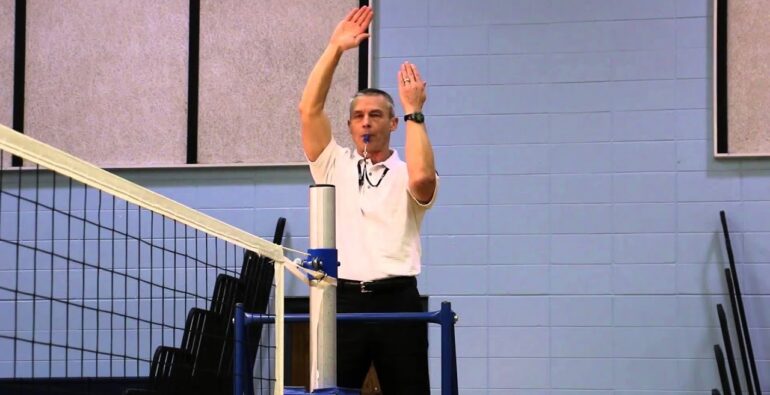Volleyball, a sport that demands agility, precision, and teamwork, is also a game of verbal and nonverbal communication. While verbal communication is crucial for strategizing and coordinating plays, nonverbal communication, particularly through hand signals, plays a pivotal role in officiating the game. Volleyball hand signals are the language of the court, enabling referees to clearly and efficiently convey their decisions to players, coaches, and spectators.

Understanding the Purpose of Volleyball Hand Signals
Volleyball hand signals serve several essential purposes:
Clear and Consistent Communication: Utilizing hand signals establishes a standardized and universally understood method of communication, fostering clarity and ensuring all participants are on the same page.
Efficient Game Flow: The use of hand signals enables referees to promptly and accurately convey their decisions, contributing to a streamlined game flow by minimizing disruptions.
Visual Representation of Calls: Hand signals, such as pointing with a finger, serve as visual representations of referees’ decisions, allowing for quick and clear communication. This practice helps maintain the smooth progression of the game without frequent interruptions.
Common Volleyball Hand Gestures and Their Meanings
Volleyball hand gestures encompass a diverse range of signals, each bearing a specific meaning. Here, we delve into some of the most common hand signals and their interpretations:
Firstly, Point Award: Upon the awarding of a point, two hands raised vertically with palms facing forward signify the accomplishment.
Secondly, Replay/Reserve: To indicate the need for a replay or reserve, a circular motion using the forefinger is employed.
Next, Fault or Violation: An indication of a fault or violation involves a downward motion using the forearm or an open hand.
Moreover, Out-of-Bounds: In the case of the ball going out-of-bounds, the gesture involves raising both thumbs vertically.
Additionally, Substitution: When a substitution is needed, a player entering the court raises both arms vertically with palms facing forward.
Lastly, Time-Out: Signaling a time-out involves raising and crossing both arms and hands in front of the chest.
Enhancing Your Volleyball Experience through Hand Gestures
Volleyball hand gestures are not just for referees; understanding and recognizing these signals can enhance the overall volleyball experience for players, coaches, and spectators. Players can anticipate plays better based on the referee’s signals, while coaches can provide more informed guidance to their teams. Spectators can better understand the game by following the referee’s hand signals.

(FAQS)
What are volleyball hand signals?
Utilized by referees during matches, volleyball hand signals are nonverbal gestures indicating decisions. Standardized and universally understood, these signals ensure clear communication among players, coaches, and spectators.
Why are volleyball hand gestures important?
Vital for game flow and integrity, they offer:
- Clear Communication: Minimizing disputes through consistent signals.
- Efficient Game Flow: Swift decisions maintain pace.
- Visual Representation: Enhancing understanding for players and spectators.
Common volleyball hand gestures:
- Point Award: Vertical hands signal a point.
- Replay/Reserve: Circular forefinger motion calls for a replay.
- Fault or Violation: Downward forearm or hand signals a fault.
- Out-of-Bounds: Raising thumbs vertically indicates out-of-bounds.
- Substitution: Player raises both arms vertically for a substitution.
- Time-Out: Referee raises and crosses arms for a time-out.
Learning resources:
- Official Volleyball Rulebooks: Detailed descriptions and illustrations.
- Online Tutorials and Videos: Visual demonstrations for better understanding.
- Coaching Clinics and Seminars: In-depth explanations and practice opportunities.
Improving understanding:
- Review Official Rulebooks and Diagrams: Gain comprehensive knowledge.
- Watch Volleyball Matches: Observe referee signals for practical insights.
- Practice Recognizing Signals: Engage in exercises and watch instructional videos.
- Participate in Clinics or Seminars: Gain hands-on guidance for proficiency.
- Discuss with Experienced Stakeholders: Engage in conversations for valuable insights.
Conclusion:
Volleyball hand gestures are crucial for fair play, game flow, and understanding. Whether a player, enthusiast, or spectator, familiarizing yourself with these signals enhances your appreciation for the sport.




